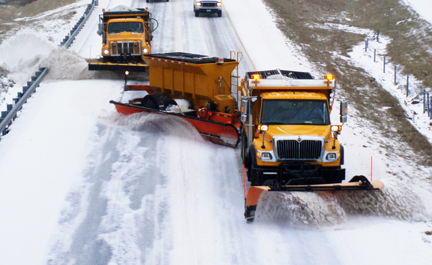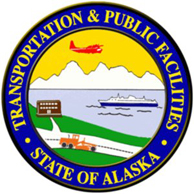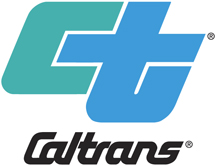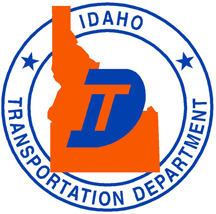
With record-breaking cold weather blanketing the U.S., state transportation departments are working hard to remove snow and ice from the nation’s roadways. Patterns of severe weather can drive up costs and challenge state DOTs to maintain a high level of service without the benefit of additional financial resources.
High-tech solutions like GPS guidance systems and low-tech products like potato juice are helping states to cut costs, improve efficiency and minimize environmental impacts.
“New technologies are being tested and implemented by state DOTs every day,” says Mike Hancock, AASHTO President and Secretary of the Kentucky Transportation Cabinet. “State transportation officials are turning to proven solutions to do their jobs faster, better and smarter. The following examples are just a few of the many ways states are keeping people and goods moving safely, this winter.”

The Alaska Department of Transportation and Public Facilities uses a variety of advanced technologies to combat extreme winter weather. This year, ADOT&PF became one of the first agencies in the country to deploy an icebreaker. The device, which attaches to the front of maintenance truck, uses a steel drum with spikes to break up ice and expose asphalt. The device, which can be raised and lowered like a snowplow blade, turns smooth ice on top of roadways into a rough surface that provides better traction for vehicles.
ADOT&PF also uses advanced technology to keep its snowplows on the road and operating during whiteout conditions. The department uses a state-of-the-art High Accuracy Differential Global Positioning System on several of its snowplows and snow blowers, which provides the operator with a virtual view of the highway. Road crews can now clear snow in zero visibility conditions while avoiding guardrails, bridge approaches, traffic signs and other roadside infrastructure.
ADOT&PF employs the Enhanced Maintenance Decision Support System (EMDSS); a new technology being deployed this winter which turns ordinary maintenance vehicles into mobile weather stations. Using cell phone signals, the specially equipped trucks automatically relay real-time road surface weather conditions. The weather data is used in conjunction with roadside weather cameras to enhance winter maintenance decisions and deploy methods best suited for current weather conditions. The department is also exploring installing mobile forecasting units on both private industry and public vehicles such as school buses and commercial trucks.

The Nevada Department of Transportation is involved in a multi-state “Integrated Mobile Observation” demonstration project headed by the Federal Highway Administration. The project equips 20 NDOT plows and trucks to collect weather and vehicle data, essentially creating a mobile weather reporting station that reports current road conditions via radio rather than cell phone signal for more dynamic and reliable road updates and winter operations in rural areas.

The Utah Department of Transportation recently expanded its LiveView Technologies® road condition monitoring camera network to more than 100 remote locations throughout the state. The solar powered system uses state-of-the-art low-cost web cameras, high-speed wireless communication and infrared sensors to broadcast video from distant mountain passes or other problem areas. Live streaming video is now shared with road users through UDOT’s Commuter Link website and mobile applications. Today, instead of sending a snowplow to investigate a location, supervisors can take a quick look and decide whether an area needs to be plowed.
“We have saved about $500,000 using this system over the last three years,” said Lynn Bernhard, UDOT Winter Operations Program Manager.

The Maryland State Highway Administration is expanding its fleet of dual-wingplows this winter. Standard snowplows can clear only 9 feet of roadway at one time. Dual-wingplows can do the work of three standard plows, clearing up to 24 feet of roadway, or two full highway lanes, in one pass. The plow was the brainchild of SHA Shop Chief Steve Henry, who began his career with the agency driving snowplows in 1972. Henry still works for the agency. While many snowplows include a “wing” blade on the side in addition to the plow on the front of the truck, SHA’s versatile new plow has two 12-foot wings – one on each side – and can use one, two, or all three in different combinations.

The Tennessee Department of Transportation is using a substance called “Magic Salt” to help melt ice and snow during lower temperatures. Magic Salt, made from potato juice, is a biodegradable, non-corrosive, and environmentally friendly substance. TDOT is also using tow plows, which are attached to the back of traditional snow plows and allow drivers to clear an additional travel lane in one pass.

The California Department of Transportation is using an innovative, new tow plow on Interstate 80’s rugged Donner Pass. The tow plow swings out from behind a traditional snowplow to clear snow from two lanes of traffic. It can also apply brine solution to prevent black ice before and after a storm. For California’s motorists, Caltrans’ new QuickMap app shows up-to-the-minute chain control information. Check it out online.

The Idaho Transportation Department has introduced a new enhancement to its 511 Traveler Services system, opening the door to two-way communication about winter highway conditions. Those who register on the IDOT system and choose specific routes of preference now have the ability to report on roadway conditions they encounter during their travels. It’s a form of crowd sourcing to make IDOT’s 511 road condition reports even more timely and accurate.
State DOTs are also encouraging motorists to do their part to keep roads clear and drivers safe. When major storms are forecast, drivers should visit state DOT websites for the latest traveler information.
Most states also offer 511 telephone information lines and Twitter alerts. Citizens also should plan to stay off the roadways during major snow events to give more room to the plow trucks.













